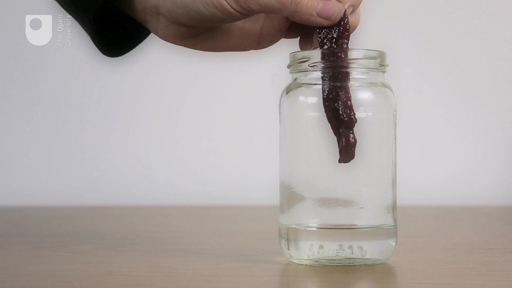2.8 Do the liver experiment
You can see the action of one type of enzyme for yourself. But first, here is some background information.
Hydrogen peroxide is a harmful by-product of many normal chemical reactions that happen in the cells of our body. It needs to be eliminated as quickly as possible.
The enzyme that breaks down hydrogen peroxide is called catalase. (Despite the earlier information about how enzymes are named, this one does not break down cats!) One catalase molecule can break down about five million molecules of hydrogen peroxide in one second. The breakdown products are water and oxygen and, because oxygen is a gas, the activity of catalase can be detected by looking for bubbles.
One place in the body where many reactions occur is the liver. It also has a particularly high concentration of catalase. So, if you would like to do this yourself, you will need some uncooked liver and some hydrogen peroxide. The easiest source of hydrogen peroxide is in some types of contact lens soaking solution. You will need to check the ingredients to be sure. Alternatively, you may be able to buy dilute hydrogen peroxide from a pharmacy.
If you put a tiny bit of raw liver on a plate and add a few drops of contact lens fluid, you should see a reaction quite clearly. You can scale it up if you like, in a jar or glass tumbler, by dropping a bigger piece of liver into some hydrogen peroxide solution (see the next video).

